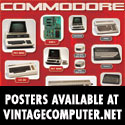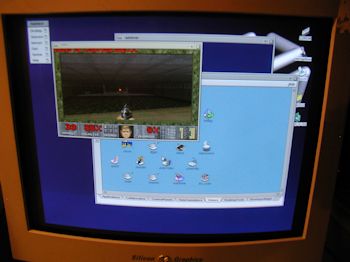Removing yellowing from plastics
SHARE |
|
  Removing yellowing from plastics
Removing yellowing from plastics |
by Bill Degnan - 10/09/2008 23:29 |
|
This is a reprint from http://www.vintage-computer.com/vcforum, but I thought it worth mirroring here. To follow is an excellent synopsis on the subject, taken from a 200 record thread:
- Part 2 (by "Merlin") "...The original thread is over 200 posts long now and getting to be a heavy read for some, so Lorne and I thought it was best that we start a new thread here, with a "Story So Far" summary, before we start more experiments. So, what has been discovered and learned so far? 1. We have learned that a magic concoction has been created that can reverse the years of yellowing of plastics, caused by the brominated flame retardants (which were added to the plastic when it was a masterbatch) migrating to the surface of the plastic and attracting oxygen molecules which become attached by a co-ordinate bond. 2. Bromine molecules are susceptible to ultra-violet light, in that chemical bonds involving bromine molecules can become destabilised if irradiated by UV light. This is what we are exploiting to remove the oxygen molecule from the brominated flame retardant. 3. The yellowing can be reversed to a degree by immersing parts in hydrogen peroxide or "Oxy" on their own, however, on their own they don't do that much; what is needed is a chemical called TAED (tetra acetyl ethylene diamine), which is a chemical found in the "Oxy" type laundry boosters. Why is this useful? It's useful because it catalyses perborates and percarbonates in the "Oxy" to produce peroxides; it can also catalyse hydrogen peroxide, which is exactly what we want. This is what makes the mixture much more potent. 4. The optimum mixture and conditions for reversing yellowing of plastics seems to be the following:- A) Hydrogen peroxide solution, the strongest you can lay hands on; B) UV light, either as sunlight or a UV lamp; C) Approx 1/4 teaspoonful per gallon of "Oxy" laundry booster. Parts immersed in this mixture will have the yellowing reversed in six to eight hours on average. Severe yellowing may take longer but it will only be a matter of a day or two. The mixture once made will last about four days before all of the peroxide is spent. 5. A more recent development is that the mixture can be made into a gel. Initial tests with Xanthan Gum added to the original mixture have shown that it can be made into a thicker material which can be brushed onto surfaces. This mixture foams up but still removes the yellowing when put under UV light, and can remove yellowing in four to six hours. This method also drastically cuts down on the amount of liquid required and means large areas can be treated at a relatively low cost. Other thickeners such as corn starch, hydroxy ethyl cellulose, wallpaper paste, latex or similar inert thickener may also work, however, tests are in the early stages, feel free to try some of these and report back if they work. 6. Recent tests by Lorne have shown that powdered hair bleach and hydrogen peroxide solution can give a similar effect to the original "Oxy" mixture, however, there may be side effects associated with using this material; early tests have seen adverse effects on paint and stickers may also be affected by this product. The original "Oxy" mixture does not affect paint or stickers, unless the stickers are held on with a water based glue or are paper stickers. 7. If you are planning to do this in a hot climate, please be aware that this mixture will heat up during the day. Lorne is in Arizona and found that temperatures in excess of 100F (38C) and beyond were encountered, which caused some warping and distortion of large pieces. If this is the case where you live, always add the component to a cold mixture and check the temperature during the day. .." For original post see: http://www.vintage-compu.../showthread.php?t=12566 Reply |
|
Resources:

Popular Topics and FAQs
Past Issues:
Before we switched over to a blog format, past page archives here:
Vintage Computer Festival East 3.0 June 2006
Commodore B Series Prototypes July 2006
VOLSCAN - The first desktop computer with a GUI? Oct 2006
ROBOTS! - Will Robots Take Over? Nov 2006
Magnavox Mystery - a Computer, or? Jan 2007
The 1973 Williams Paddle Ball Arcade Computer Game Feb 2007
The Sperry UNIVAC 1219 Military Computer May 2007
VCF East 2007 - PET 30th Anniversary June/July 2007
The Electronic Brain August 2007
Community Memory and The People's Computer Company October 2007
Charles Babbage's Calculating Machine December 2007
Vintage Computing - A 1983 Perspective February 2008
Laptops and Portables May 2008
From Giant Brains to Hobby Computers - 1957 to 1977 August 2008
Historic Computer Magazines November 2008
World's Smallest Electronic Brain - Simon (1950) December 2008 - Feb 2009
Free Program Listings Spring 2009
Computer Music Summer 2009
Popular Electronics Jan/Feb 1975 - Altair 8800 Fall 2009
Early Microcomputer Mass Storage Summer 2010
O2 Running Doom

This image was selected at random from the archive. Click image for more photos and files from this set.